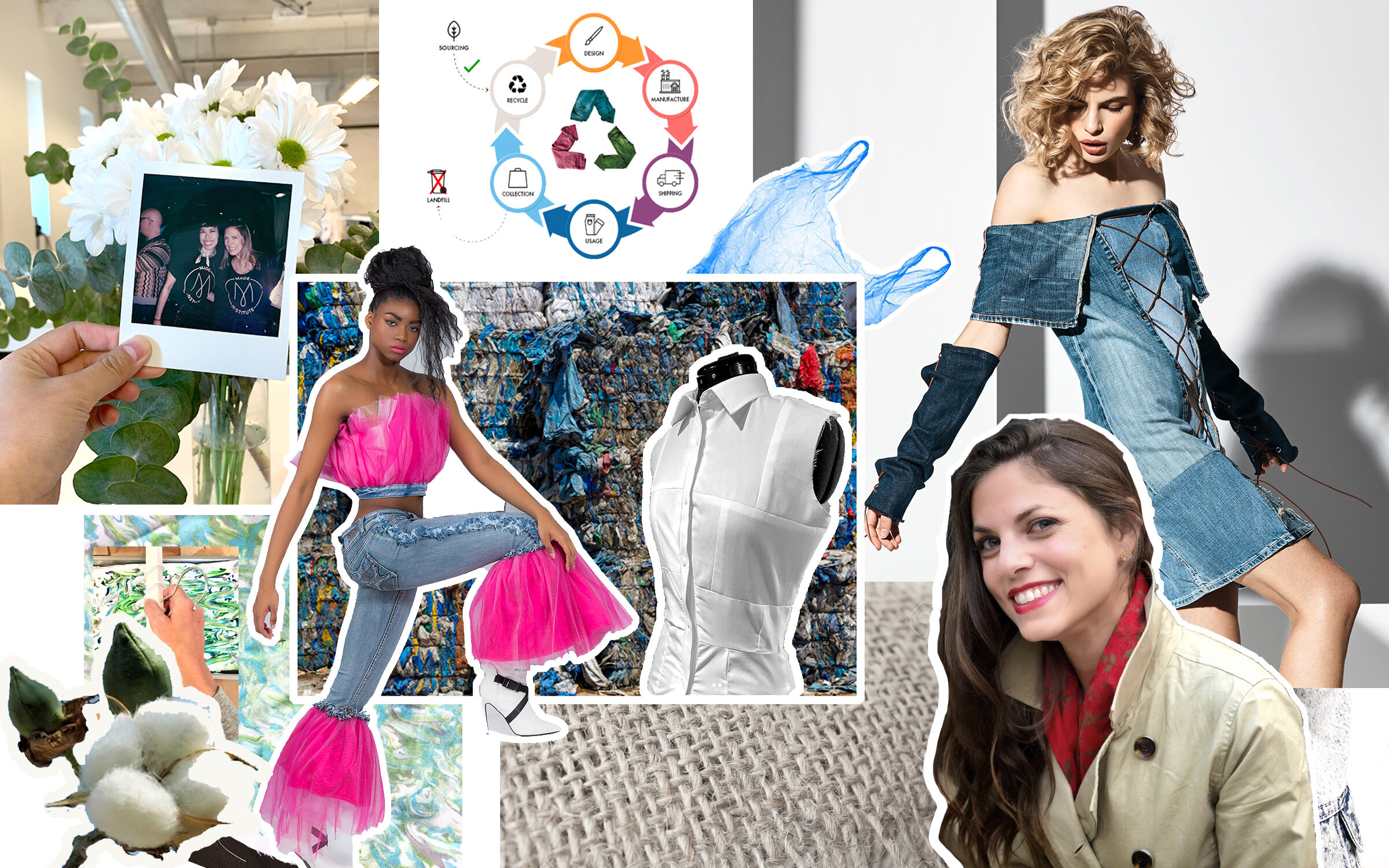As we all know, fashion by nature is not sustainable. Currently over 65% of garments created end up in a landfill and according to the Ellen MacArthur Foundation one full garbage truck load of clothing is ending up in the landfill or being incinerated every second. EVERY SECOND!! This is an unacceptable statistic and as a designer and business owner I believe that you have a responsibility to change this. When you are creating a product, you need to think about where that product will end up at the end of its lifecycle. By being mindful and thinking about fashion in a circular way we can create change. Below are some ideas on how to implement circular thinking into your brand.
Zero Waste Design: Sustainability starts in the design phase. Designing your patterns with no waste in mind is key. Can you change the silhouette slightly to get more use out of your fabric? If you are not sure how to do this, work with a patternmaker or take a zero-waste patterning class. And, as always, we live in the world of the internet, google it!
Use all parts of the fabric that you are using. Think about using the scraps for straps, pockets or binding. Pay attention to your waste, not only from your fabric but also in your studio space or office. Where are you throwing things away that could be recycled, upcycled or reused?
The only way to be truly sustainable is to use what is already in existence. Upcycle by taking existing clothing and accessories and using their materials to make something new. Do you have product from a previous collection or old samples that you can’t sell? How can you recreate them into something new? Recycling is an option, but using what you have should come first. P.S. This also will save you money
Use remnant fabric. Remnant fabric is left over fabric from other designers or fabric mills that is not being used and will eventually end up in the landfill.
Use natural fibers: organic cotton, organic hemp, and organic linen. Fabric made with these materials, without harmful finishes will biodegrade the fastest.
Recycle unused fabric responsibly with Terracycle, Helpsy, or Blue Jeans Go Green. You can even take back your customers unwanted clothing and recycle them with these brands.
Avoid using fabric made of plastic, micro plastics get released into water when washed, endangering our ocean life and can take over 500 years to biodegrade, releasing harmful gases into our air and water ways.
Educate your customers. This may seem simple but this may be the most important step. We are all in this world together and the more people that are educated on the effects fashion industry the more we can create change.
Think about your packaging, Eco Enclose is a great resource. Avoid plastic whenever possible, think about polybags, attaching hang tags to garments, even in your shipping tape.
Think about the end of your garment’s lifecycle, what will happen to it when your customer is done? Will you offer mending? Will you take the product back to recycle?
Consider limiting your quantities to avoid excess inventory, would a made to order model work for your customer? This could also save you money because you are not holding large amount of inventory.
Manufacture and source locally reducing your carbon footprint!
This list is just the beginning! The industry is changing and I am excited to be part of this change. You have the ability to create change and make a difference. Message me on Instagram @ramednick and tell me how you are creating a more sustainable brand.
Written by Rachel Mednick, Business of Fashion Instructor
Rachel Mednick holds a BS from Drexel University in Design & Merchandising and a Master's Degree of Professional Studies in Business of Fashion from LIM. Rachel is a fashion educator and advocate for circular fashion. After selling her children's clothing brand in 2019, she switched her focus to fashion education to make a bigger impact on creating change within the industry.

